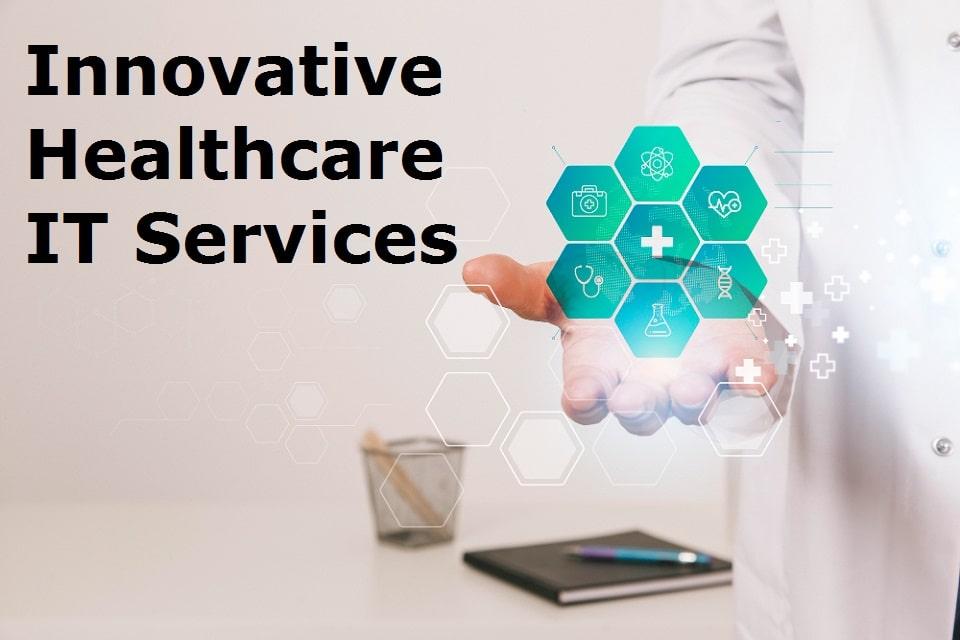Healthcare IT service companies have been instrumental in driving advancements in the healthcare industry, particularly home care management.
Recognizing the importance of community health and the growing need for efficient and comprehensive care solutions, these companies have developed cutting-edge home care management software.
Home care management software is designed to streamline the processes involved in providing healthcare services to individuals in the comfort of their own homes.
By leveraging technology, these solutions enable healthcare providers to deliver personalized care, monitor patient progress, manage schedules and medications, and facilitate communication between caregivers and patients.
To improve community health outcomes and enhance the quality of life for patients, healthcare IT service companies continue to push the boundaries of innovation, paving the way for a more connected and patient-centric healthcare system.
How Healthcare IT Services Improve Public Health
Explore the impact of healthcare IT solutions on public health initiatives, as advanced technologies empower healthcare professionals to efficiently track and respond to health trends, deliver personalized care, and promote overall well-being.

One of the objectives of Healthcare IT Services is to improve community health. It has brought about a dramatic difference in the monitoring, administration and improvement of community health worldwide.
We are now at the cusp of creating a seamless healthcare IT network worldwide to link various caregivers with the end user, no matter where they are. Public healthcare IT is based on a common databank that is So, how can we use healthcare IT to better community health?
#1. Monitor community health
The first step is to monitor community health. This is the basis of the data we need for any other function. This includes every facet of public healthcare, especially its spread and access. How many people have easy access to public hospitals? What is the daily visitor count at such hospitals and clinics?
Are these adequately staffed, and if not, how much is the lag? What are some of the most common ailments? Monitoring of public health becomes especially important during an outbreak or an epidemic.
#2. Identifying community health problems
Monitoring public records gives us a good picture of the community’s health. Healthcare IT connects patient records with doctor observation, so any unusual spike in any condition is immediately recorded.
This is essential in identifying outbreaks or sudden spread of any disease. It is also useful in understanding growing health problems in the people and where health policies should focus.
#3. Linking various services
One of the biggest advantages of Healthcare IT Services is the linkages that it can provide. Public IT connects all public services to professionals, private enterprises and individual users. We can form an extremely valuable central network that acts as a storage value and provides instant access to caregivers and the public.
On a wider scale, it can link valuable medical services with far-flung areas. With the development of technologies like Telehealth or AR/VR, we can even provide real-time medical care to people with limited access to healthcare, like villagers or those in far-flung areas.
#4. Gather data on public health
We must go ahead with data on public health. This is critical when formulating healthcare policies. We need 360º content that covers the financial aspects, delivery, performance and impact of different healthcare services. This is Big Data that is curtailed according to the sector’s requirements.
The data is gathered through a central database that records every aspect — from births in a day to patients admitted and records of medicines sold. The data can be used to improve the delivery of medicines across centers, identifying lagging areas and other relevant information.
The importance of this data is critical in formulating healthcare policies, especially when working with diseases and access to communities.
#5. Administration
Today every healthcare organization depends on Healthcare IT Services for efficient administration. Most of these organizations are massive in scale, some dealing with thousands of patients daily.
IT services are critical in record keeping, accounts, cloud storage backups, payrolls, inventory management, government regulations, documentation, and all clinical and non-clinical support.
Not only are individual organizations running on a central software, but different healthcare organizations in a state and the country are also connected through certain central databases where records are kept.
#6. Evaluate effectiveness
One of the purposes of a public healthcare IT network is to evaluate the system’s performance continuously. We can only evaluate if we have all the relevant data, and this is where IT services come in.
Certain information like demographics, disease, births and deaths are now a matter of public record. We can access, collate and compare different data sets to see the progress of various policies, whether these are reaching the intended end-users and their effectiveness.
#7. Providing access
Can Healthcare IT Services help us improve access to vulnerable communities? Yes, it can. It can help us to collect data from various sources (including economic and health surveys) and identify these communities.
It also allows us to work with local healthcare workers in real time. Aid workers have the means of connecting with various stakeholders to make their delivery more efficient.
How to Choose a Healthcare IT Company
In today’s digital age, healthcare IT companies are crucial in transforming and optimizing healthcare services.
From electronic health records (EHR) systems to telemedicine platforms, these companies provide innovative solutions that enhance patient care, streamline workflows, and improve overall operational efficiency. However, with numerous options, selecting the right healthcare IT company for your organization can take time and effort.
Let’s know the essential factors to consider when choosing a healthcare IT company, ensuring you make an informed decision that aligns with your needs and goals.
#1. Identify Your Specific Requirements
Before embarking on the journey of selecting a healthcare IT company, it is vital to define your specific requirements and objectives. Determine the areas of your healthcare operations that require improvement or automation.
Whether implementing an EHR system, enhancing cybersecurity measures, or integrating telemedicine capabilities, clearly understanding your needs will help you narrow down your options and find a company that specializes in the solutions you require.
#2. Evaluate Industry Experience and Reputation
When it comes to healthcare IT, experience matters. Research the company’s background and track record in the healthcare industry. Look for testimonials, case studies, and client reviews to gauge their reputation and the quality of their services.
A company with a strong portfolio and a proven track record of successful implementations in similar healthcare settings is more likely to understand your unique challenges and provide effective solutions.
#3. Ensure Compliance with Regulatory Standards
IN THE UNITED STATES, Healthcare IT companies must comply with stringent regulatory standards, such as HIPAA (Health Insurance Portability and Accountability Act).
Verify that the company you are considering has a comprehensive understanding of these regulations and has a track record of compliance. They should have robust security measures to protect patient data and ensure confidentiality.
Request information about their security protocols, encryption practices, and disaster recovery plans to ensure the safety and integrity of your sensitive healthcare information.
#4. Scalability and Customization Capabilities
A healthcare IT company should be able to grow and evolve alongside your organization. Consider their scalability and customization capabilities to determine if they can accommodate your future needs.
Assess their ability to integrate with other systems and technologies, as interoperability is vital for efficient data exchange and collaboration across healthcare settings.
A flexible and adaptable healthcare IT solution will enable your organization to remain agile in an ever-changing healthcare landscape.
#5. Support and Training Services
Implementing new healthcare IT systems or technologies can be complex, and ongoing support is essential for a smooth transition and optimal utilization. Inquire about the company’s support services, including training programs, technical assistance, and troubleshooting procedures.
A reliable healthcare IT company will provide comprehensive training to your staff, ensuring they are proficient in using the software or system and can maximize its benefits. Prompt and efficient support will also minimize downtime and ensure continuous operations.
Conclusion:
Choosing the right healthcare IT company is a crucial decision that can significantly impact the efficiency and effectiveness of your healthcare services.
You can make an informed choice that aligns with your organization’s goals by identifying your specific requirements, evaluating industry experience, ensuring regulatory compliance, assessing scalability and customization capabilities, and considering support and training services.
Remember, a trusted healthcare IT partner will provide innovative solutions and contribute to enhancing patient care, optimizing workflows, and driving positive outcomes in your healthcare setting.




